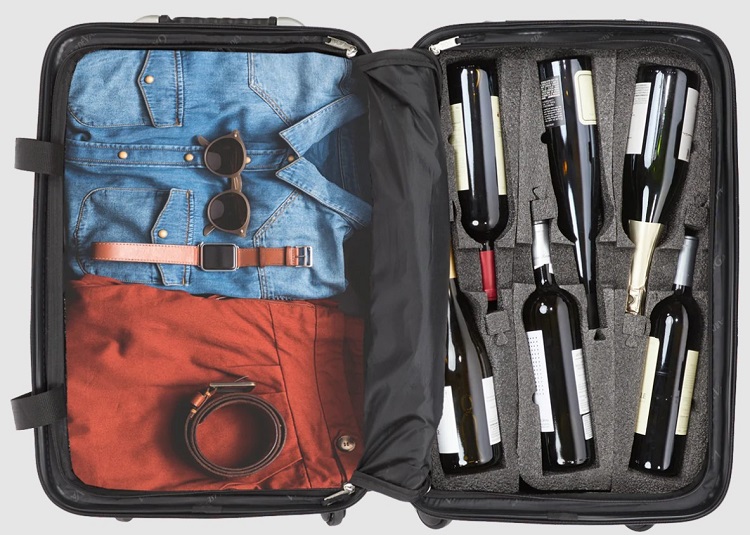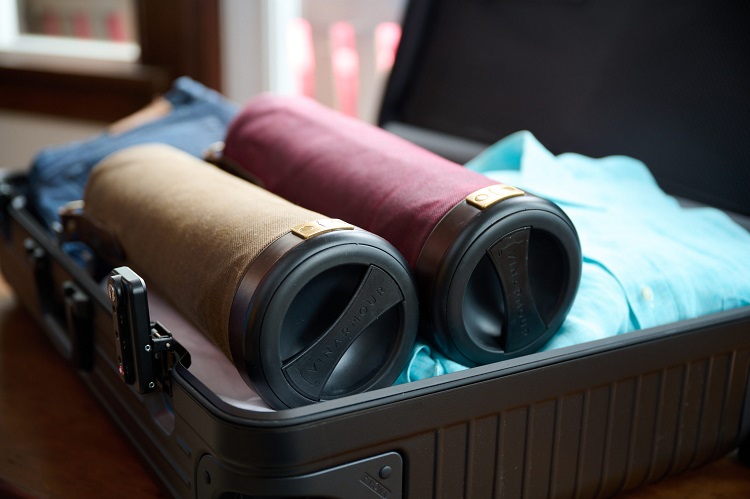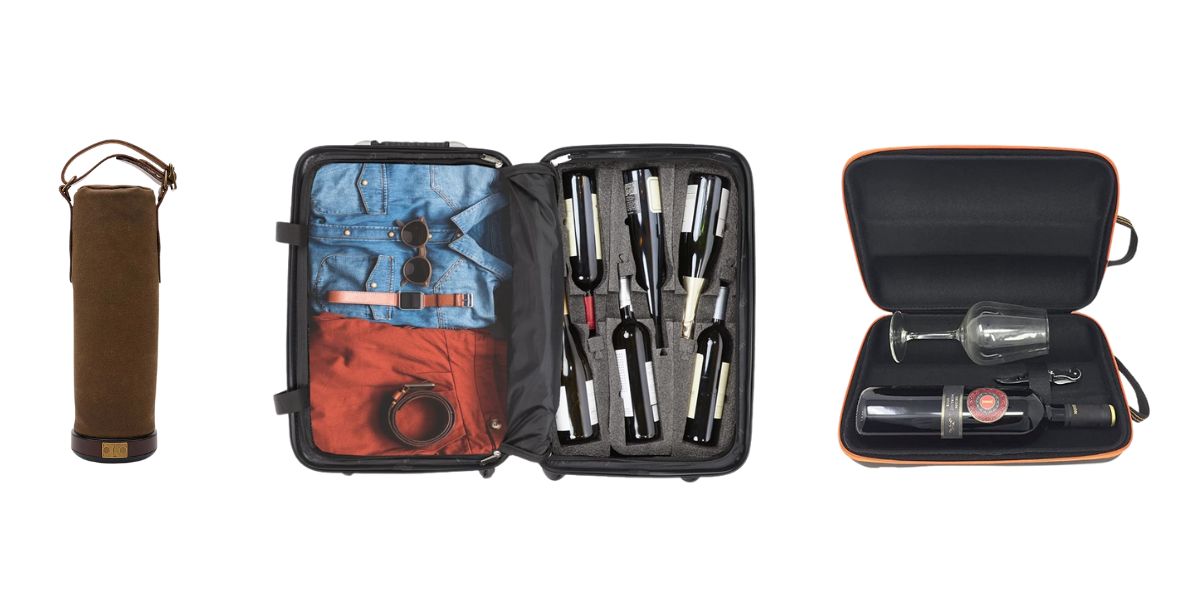Bringing a Bottle Back: How to Protect Your Wine for the Flight Home
As wine enthusiasts eagerly embark on bucket-list enotravel to visit the world’s most renowned wine regions, the desire to bring home wine or spirits for personal collections or to share with friends and family while reminiscing about their adventures is stronger than ever. But to many of us, the thought of seeing our luggage on the arrival carousel in a puddle of claret is too frightening, and we simply avoid it altogether.
So, how does one minimize the risks of bringing back a sip-able souvenir? Let’s review and critique the options for protecting special wine bottles you find on your travels.
MacGyver-ing the wine pack job
In a pinch, many of us have tried to protect the bottle with the clothes or contents already at hand in our luggage. Although this most commonly-used option may not seem to warrant explanation, there is a science to giving this method a modicum of impact and leak resistance.
Start by slipping the bottle in a thick sock for the first layer of protection. Next, slide the sock-lined bottle into the base of a boot, or thickly and tightly wrap with jeans or a chunky sweater. The more layers the better. For leak insurance, insert the bottle into a heavy-duty garbage bag and roll it up like a sleeping bag. Lastly, and most importantly, the bottle needs to be in the middle of your suitcase, surrounded on all 6 sides by clothing or other articles.
Advantages: Little or no cost; takes up no additional space in luggage; no need to pack an additional accessory; can pack essentially any size/shaped bottle.
Disadvantages: Keep your fingers crossed if TSA inspects and repacks your bags; moderate risk for breakage/leakage remains.
RELATED: Top Wine Gifts & Accessories for the Winetravler in Your Life
Wine travel sleeves offer basic, but limited protection
Consider upleveling the basic option simply by bringing a neoprene wine tote/sleeve along and use in lieu of a sock as the first layer of protection. Neoprene is basically a rubber and offers much more impact protection than a cotton sock. It’s also inexpensive and easy to pack prior.
Ubiquitous and found online and within wine tasting rooms, the most common wine travel sleeve is a style of thick, heavy plastic bubble wrap with a Ziplock and/or folding velcro closure to prevent leaking. These widely available products carry an inexpensive price tag, and are compact in size while either full or empty. The bubble wrap, however, gives much less impact protection than one would think, and the plastic can be easily punctured by broken glass, risking spillage onto other luggage contents. If used, consider wrapping these sleeves within a heavy article of clothing and finish off by rolling them up in a garbage bag. Common examples of these are Wine Wings, JetBag, and WineSkin.
Offering slightly more protection than bubble wrap are inflatable wine sleeves that contain a bladder that is filled with air, either by using a pump or by blowing before sealing the bag. Like bubble wrap bags, Vinnibag, and the Giemson Wine Bottle Protector also have the advantage of being flat and compact while empty, but likewise are susceptible to puncture if the bottle breaks. The main disadvantages with these is that they take up considerable space when inflated (especially if accompanied by a pump) and they must be filled with considerable air pressure to be effective at all.
Advantages: Widely available; low cost; very portable; the non-inflatables take up minimal space; accommodates essentially all 750ml sized bottles.
Disadvantages: Only moderate protection–till susceptible to breaking and puncture/leaking; inflatables may take up considerable space and may burst with increases in cabin pressure.
RELATED: Browse the Winetraveler Shop to Purchase Trending Apparel and Wine Travel Accessories

Hard cases are reliable but large
Used by wine professionals who travel with multiple bottles for business (or if you don’t mind hauling an extra bag or possibly paying excess airline fees), by far the best armor for bottles is a hard case. These are larger, check-in luggage cases containing foam inserts meant to handle up to 12 bottles of wine, such as the VinGarde Valise or Vino Voyage. Coming in a range of sizes and with some variability in shell rigidity, these cases can offer the most reliable protection against bottle breakage. Smaller options for one or two bottles exist, but be prepared to sacrifice some luggage space for this type of protection.
Advantages: Best protection against impact; best for traveling with multiple bottles.
Disadvantages: Not leakproof; takes up considerable space within luggage; not very portable when empty; may not accommodate some wider bottles.

Worry-free travel, with a price tag
New to the market and arguably the best single single-bottle carrier is the Vinarmour Wine Carrier. While no fabric is as impact-resistant as a hard case, this handmade carrier is fortified by a protective foam that absorbs 90% of impact energy, weighs much less than a hard case, and can be compactly folded down portable when not in use. Two different types of Kevlar and Dyneema—all used in making protective body armor—make it the only puncture AND leakproof wine bag on the market. Vinarmour’s versatility makes it well worth the high cost: not only does it function as a stylish tote for carrying around town, but it also keeps wines chilled twice as long as neoprene.
Advantages: Excellent impact, puncture and leak protection; folds compact and portable; occupies minimal space; multi-use/versatility as a carrier or tote; thermally insulative.
Disadvantages: High cost (especially if traveling with more than one bottle); less shock-resistant than hard cases; may not accommodate bottles larger than standard champagne size.
Traveling with wine or spirit bottles will always involve some risks and trade-offs, but one of the great pleasures of wine tourism is to bring a hard-to-find bottle back to share with friends and family. With a little knowledge of the pros and cons of proper accessories, you can minimize the risks and enjoy the fruits of your wine vacation, long after you return home.
Frequently Asked Questions about Wine Bags for Travel
You are reading “The Best Wine Bags and Bottle Protectors for Travel” Back To Top
wine bags, bottle protectors, wine carriers: wine gifts and accessories
If you enjoyed this guide, consider joining the Facebook Group to interact with other Winetravelers and for travel inspiration around the world, and be sure to follow along with us on Instagram.
